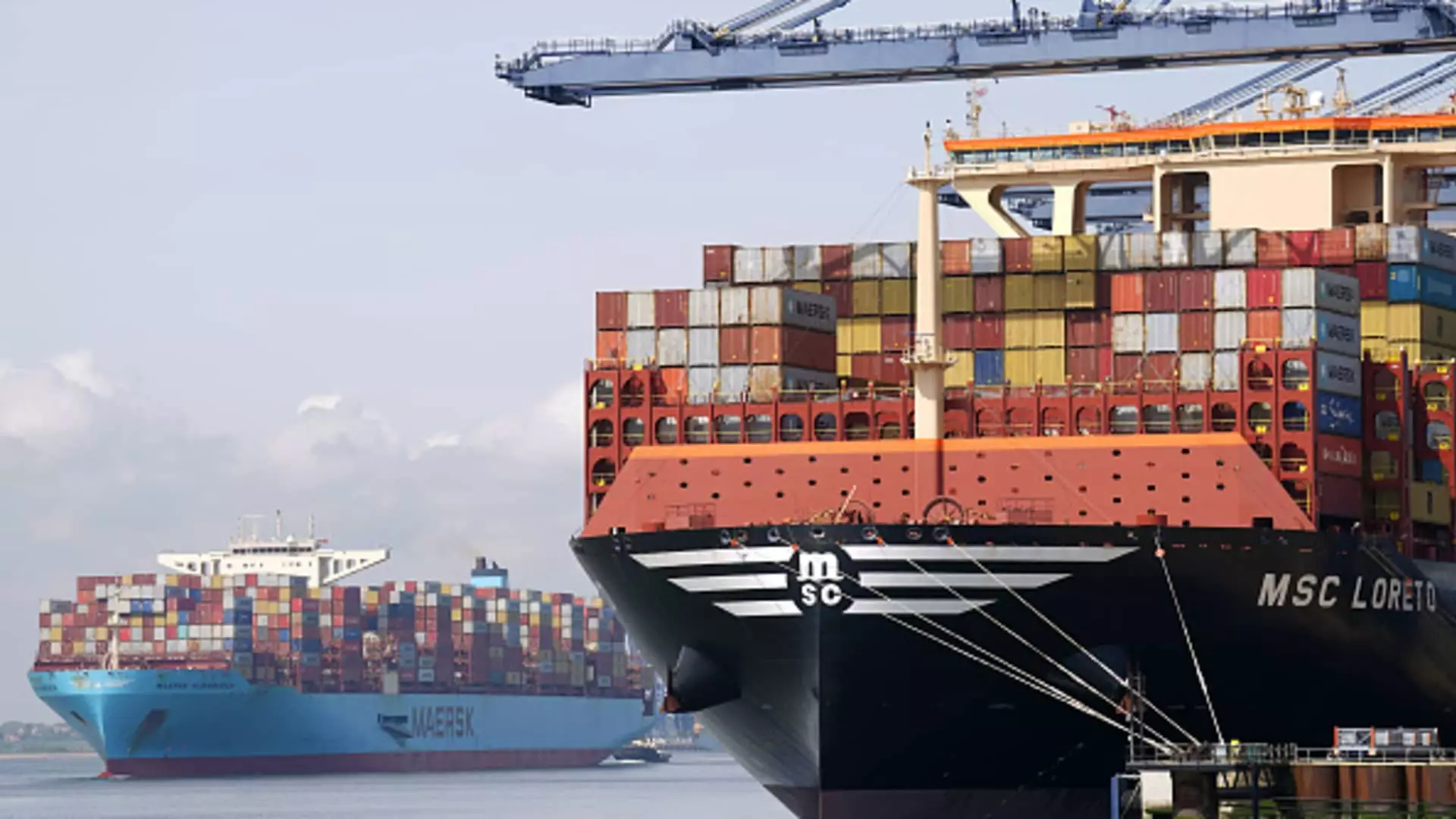The onset of 2025’s first quarter signals a tumultuous phase for investors worldwide as shadows of uncertainty loom large. Driven primarily by the questionable trade policies initiated by former U.S. President Donald Trump, the current economic landscape has shifted into an unpredictable realm fraught with risks and becoming increasingly complicated for businesses, consumers, and investors alike.
The Unforgiving Impact of Tariffs
In April, an avalanche of tariffs was unleashed, shaking global trade dynamics and challenging the forecasts of even the most cautious investors. As U.S. officials engage in negotiations with the European Union and the U.K.—seeking to reduce the burdensome 25% and 10% tariffs respectively—broader implications are on the horizon for various sectors. The possibility of escalating tariffs on steel, aluminum, and automotive products leaves markets teetering, making it crucial for stakeholders to anticipate how these developments might influence their portfolios.
Yet beyond the immediacy of these tariffs lies an escalating tension between the U.S. and China—the titans of global trade. The specter of a full-blown trade war rattles even the most optimistic outlooks, as the ripple effect would undoubtedly disturb not just bilateral relations but the entire global marketplace. Investors must brace themselves as this uncertainty unfolds, recognizing that the impact of these geopolitical maneuvers transcends borders.
Initial Earnings Report Signals Trouble
The early earnings leaks from significant European corporations echo a familiar refrain of anxiety. Luxury powerhouse LVMH and semiconductor leader ASML reported vulnerabilities tied directly to the hand of tariffs. With phrases like “aspirational clientele” and “new uncertainty” permeating their communications, the mood is unmistakably stormy. Investors are struggling to quantify the true consequences, as even high-caliber firms find themselves caught in the precarious web of Trump’s policies.
The unpredictability of demand creates daunting challenges, prompting a re-evaluation of long-term strategies. Corporate leaders openly question the ramifications of tariff strategies, recognizing that both consumer behavior and supply chains might demand realignment. The mettle of corporate giants is being tested, forcing them to strategize around potential disruptions—an unnerving scenario for those rooting for consistent growth.
Companies on the Hot Seat
A spotlight shines on several other European firms that have yet to disclose their earnings—insight into their resilience or vulnerability could offer clues for investors. Notably, Danish shipping and logistics giant Maersk prepares to report on its earnings on May 8. Historically considered a bellwether for global trade, it has already expressed concerns, dubbing U.S. tariffs as “significant” and detrimental to trade stability. The anticipated decline in earnings from $3.6 billion to $2.3 billion in EBITDA starkly illustrates the toll tariffs have taken on trade operations.
Shell, another heavyweight, follows suit with its report due on May 2. Despite a corporate focus on enhancing shareholder returns, whispers of dwindling production expectations add to the ongoing saga of uncertainty. Analysts are cautiously optimistic about Shell’s cash flow despite the pitfalls surrounding crude prices, yet they acknowledge the inherent volatility that accompanies such fluctuations.
With the automotive sector grappling with tariff implications, Volkswagen finds itself in a particularly tricky scenario. Analysts have scrutinized the fallout from tariffs imposed on Canadian and Mexican imports, recognizing that these measures could cripple established supply chains and production plans adversely. Even as Volkswagen anticipates a slight uptick in revenue, the potential drop in EBIT from €4.6 billion to €4.03 billion casts a shadow on the prospects of long-term profitability.
The Broader Implications on Consumer Behavior
As corporate performance indicators signal impending difficulties, the broader implications for consumer behavior warrant significant attention. A rising tide of economic nationalism and protectionism confronts the global market, prompting individuals to question their spending habits and preparedness to engage with U.S. companies amid rising tensions. Some are even predicting a wave of boycotts against American products that could further aggravate the situation.
Notably, the airline industry is not immune to these shifts; Lufthansa’s upcoming reports are expected to shed light on travel trends that have been impacted by rising tariffs and the associated rhetoric. The evolving dynamics of public perception could influence demand, leading to fundamental changes in operational strategies.
Concerns for the Healthcare Sector
In light of these uncertainties, the pharmaceutical sector is particularly vulnerable, with companies like Novo Nordisk at a crossroads. As the U.S. market remains critical for sales of popular drug products like Ozempic and Wegovy, the chilling prospect of tariffs lingers ominously. Investors now must question how these potential tariffs might reshape market access and demand for various pharmaceutical offerings.
The possibility of tariffs in pharmaceuticals appears to be a nascent threat that, if not addressed, could undermine years of innovation and growth within this vital industry. As the administration conducts investigations on drug imports, pharmaceutical firms scramble to adapt to a new reality that could fundamentally alter their operational frameworks.
The trade landscape ahead appears fraught with challenges, calling for investors to harness their intuition and stay agile. The ongoing volatility instigated by tariffs brings uncertainty to the forefront, and with that uncertainty comes both risk and opportunity. For those navigating these turbulent waters, one thing remains clear: 2025 demands vigilance, strategic insight, and an openness to adapt in a climate of change.

